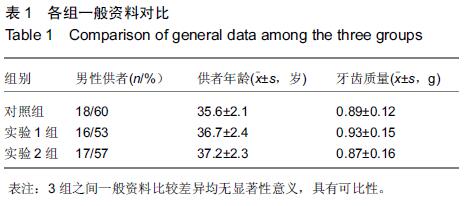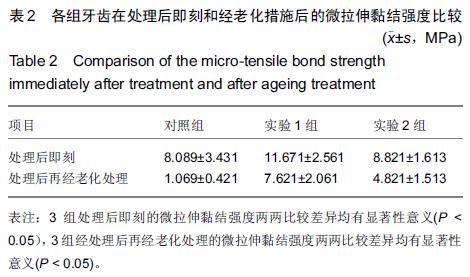| [1] 魏士刚.碘氧疗法治疗智齿冠周炎80例临床观察[J].中国社区医师,2010,12(27):124-125.
[2] 陈杰,谢红军,蒋菲,等.青少年前牙缺失57例临床诊治分析[J].中国美容医学,2011,20(4):641-644.
[3] Setzer FC,Shah SB,Kohli MR,et al.Outcome of endodontic surgery:a meta-analysis of the literature--part 1:Comparison of traditional root-end surgery and endodontic microsurgery.J Endod.2010;36(11):1757-1765.
[4] 张志红,贾莉,卢文博,等.根尖刮治术治疗48例有瘘型根尖周炎远期疗效临床观察[J].中国美容医学杂志,2010,19(6):894-896.
[5] 王晓波,陈晖,张玉芹,等.前牙缺失金属烤瓷冠桥修复临床观察[J].中国美容医学,2012,21(5):12-13.
[6] Cho CM,You HK,Jeong SN. The clinical assessment of aggressive periodontitis patients.J Periodontal Implant Sci. 2011; 41(3):143-148.
[7] 丁波,贾莉,卢富,等.两种材料烤瓷冠桥修复牙周情况长期临床观察[J].中国美容学,2010,19(1):91-93.
[8] 李津乐.不同粘结系统与纤维桩桩道内界面形态学和粘结强度分析[D].郑州大学,2010.
[9] 高宇.粘结剂使用方式对全酸蚀树脂水门汀粘结性能影响的研究[D].第四军医大学,2010.
[10] 张兰.二氧化锆全瓷系统在口腔修复科中的临床应用及发展趋势[J].医学理论与实践,2011,24(5):520-523.
[11] 高宇,黄鹂,胡琳,等.粘结剂使用方式对全酸蚀树脂水门汀粘结性能影响的研究[J].北京口腔医学,2011,19(1):78-79.
[12] 张晓燕,吴凤鸣.激光预处理牙本质对树脂粘结性能影响的研究进展[J].口腔医学,2015,35(1):76-77.
[13] 赵梅,刘瑶.二氧化锆全瓷冠、桥用于修复前牙的临床效果评价[J].中国美容医学,2011,20(8):1300-1302.
[14] 郭可武,张保卫.自粘结型树脂水门汀的研究进展[J].口腔材料器械,2011,20(2):92-94.
[15] Turkmen C,Durkan M,Cimili H,et al.Tensile bond strength of indirect composites luted with three new self-adhesive resin cements to dentin.J Appl Oral Sci.2011;19(4):363-364.
[16] 钟恬,胡道勇,江燕,等.五种表明处理对氧化锆瓷与自粘结树脂水门汀粘结强度的影响[J].实用口腔医学杂志,2013,29(1):31-32.
[17] 于世凤.口腔组织病理学[M].北京:人民卫生出版社,2012:42-43.
[18] 陈敏乐,丁江峰.Er:YAG激光在口腔医学中的应用[J].国际口腔医学杂志,2012,39[6):797-798.
[19] 郭可武,翁维民,张保卫.3种树脂水门汀对CAD/CAM全瓷-牙本质剪切强度的比较[J].上海口腔医学,2012,21(1):20-21.
[20] 陈涛,吴凤鸣.4种嵌体制作材料边缘微渗漏的对比研究[J].口腔医学,2010,30(11):661-662.
[21] 丘洪添,张超,徐伟成,等.全酸蚀粘结系统与自粘结系统玻璃纤维桩核修复抗剪切强度的对比研究[J].广东牙病防治,2012,20(7): 90-91.
[22] 霍红艳,左乾.根尖刮治术与根尖倒充填术治疗慢性根尖周炎疗效比较[J].中国实用口腔科杂志,2010,3(1):47-48.
[23] 徐春华,耿建平.表面硅涂层改性对氧化锆陶瓷与树脂水门汀粘结强度的影响[J].口腔医学,2012,32(11):668-669.
[24] 张磊,胡书海.氧化锆全瓷粘结方法的研究进展[J].大连医科大学学报,2010,32(2):315-316.
[25] 柳娟.根冠牙本质表面处理对树脂水门汀粘结强度影响的研究现状[J].口腔材料器械,2011,20(1):90-91.
[26] 贾兴亚,刘婷婷,李心瑶,等.两种牙体预备方法对玻璃离子水门汀与牙本质间粘结力的影响[J].中国医学大学学报,2011,40(3): 234-235.
[27] 刘莉,陈小冬.三种树脂粘结系统对纤维桩粘结强度的对比研究[J].中国实用口腔科杂志,2011,4(9):532-533.
[28] 张小红,崔崇富,张秀乾.4种粘合剂对ceramage聚合瓷嵌体微渗漏的对比研究[J].苏州大学学报:医学版,2012,32(1):909-910.
[29] 刘坤,张惠民,申丽丽,等.Na:YAG激光对3种树脂水门汀与牙本质粘结强度的影响[J].华西口腔医学杂志,2012,30(5):309-310.
[30] 王蕾,吕海鹏,韩冰,等.不同激光预处理对全瓷和牙本质粘结强度影响的体外研究[J].牙体牙髓牙周病学杂志,2013,23(6): 195-196.
|


.jpg)